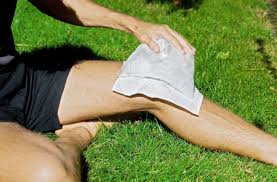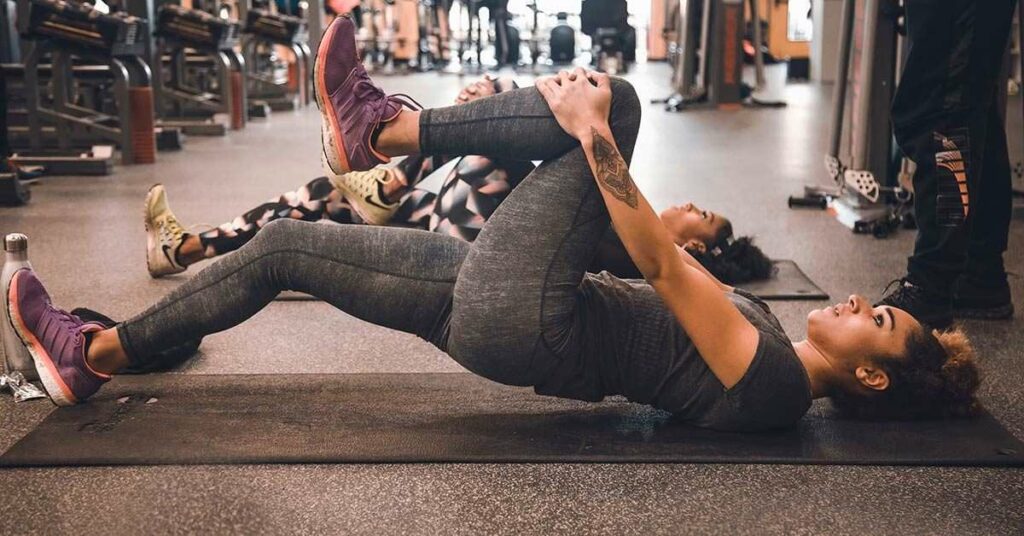IT band pain is one of the most common injuries runners face. The IT band, or iliotibial band, is a thick piece of connective tissue that runs along the outside of your thigh. It can become painful and inflamed if you don’t take care of it properly. In this blog post, we will discuss what IT band pain is, how to treat it, and how to prevent it from happening in the first place!
Contents
What Is IT Band Pain?

IT band pain is a common issue that can plague runners and other athletes. The IT (iliotibial) band is a thick band of tissue that runs along the outside of the thigh from the hip to the knee. It provides stability to the knee joint and helps to move the leg during running and other activities.
When the IT band becomes irritated or inflamed, it can cause pain on the outside of the knee or thigh. This pain is often worse with activity and can make it difficult to run or participate in other activities.
What Causes IT Band Pain?
There are a few different things that can cause IT band pain. There are various causes of It Band pain:
Overuse
This is the most common cause of IT band pain. When the IT band is used repetitively, it can become irritated and inflamed. This is often seen in runners who have increased their mileage or intensity too quickly or who are not cross-training sufficiently.
Injury
A direct injury to the IT band can also cause pain. This could be from a fall or other trauma to the area.
Alignment issues
If your knees are not tracking properly when you walk or run, this can put extra strain on the IT band and lead to pain. alignment issues are often seen in people with flat feet or excessive pronation.
Osteoarthritis
This degenerative joint condition can also lead to IT band pain, as the cartilage around the knee joint wears away.
Symptoms
There are various symptoms Of IT band pain. They are as follows:
1. The pain is usually worse when you walk, run, or cycle for long periods of time.
2. The pain may also be felt when you sit for long periods of time with your legs crossed.
3. You may also experience a snapping sensation when the affected leg is extended.
4. You may also feel a dull ache on the outside of your thigh.
5. The pain may also radiate down to your knee.
How Can You Treat IT Band Pain?

There are a few different things you can do to treat IT band pain.
Physical therapy
Physical therapy can help to stretch and strengthen the muscles around the knee, which can help to reduce pain.
Rest
This is probably the most important thing you can do. Your body needs time to heal, and if you keep going, you’re just going to make the pain worse. For example, if you’re a runner, you might need to take a few days (or even a week or two) off from running.
Ice
Ice can help reduce inflammation and pain. Apply ice for 20 minutes at a time, several times a day. For example, you could ice for 20 minutes in the morning, 20 minutes at noon, and 20 minutes at night.
Heat
Heat can also help reduce pain and inflammation. Apply heat for 20 minutes at a time, several times a day. For instance, you could take a hot bath or shower, use a heating pad, or put a hot water bottle on the affected area.
Stretching
Gently stretching the muscles and tendons around the IT band can help reduce pain. Try the following stretches:
- Laying on your side, bring your affected leg up to a 90-degree angle. Gently pull your knee toward your chest until you feel a stretch. Hold for 30 seconds and repeat 3 times.
- Sitting in a chair, cross your affected leg over your other leg. Gently lean forward until you feel a stretch. Hold for 30 seconds and repeat 3 times.
- Standing up, hold onto a support such as a table or a chair. Cross your affected leg behind your other leg. Gently lean forward until you feel a stretch. Hold for 30 seconds and repeat 3 times.
Massage
Massaging the muscles and tendons around the IT band can also help reduce pain.- Massage may help increase blood flow and reduce inflammation. You can do this yourself by using your fingers to massage the affected area. You can also see a professional for a deeper massage.
Foam rolling
This is a type of self-massage that can help stretch and release the IT band. To foam roll, place a foam roller on the ground and lie on your side with the affected leg on top of the roller. Slowly roll back and forth from your hip to your knee.
Acupuncture
Acupuncture has been shown to be helpful for some people in reducing pain.For example, one study found that acupuncture was more effective than no treatment at reducing pain in people with knee osteoarthritis.
Corticosteroid injections
These are a type of anti-inflammatory medication. They can be injected into the area around the kneecap to help reduce pain and swelling.
Chiropractic
Adjusting the bones in your pelvis and lower back can help reduce pressure on the IT band and relieve pain. For example, if your pelvis is out of alignment, it can put extra strain on the IT band. This can lead to inflammation and pain.
If you’re still having pain, see a doctor. You may need physical therapy or other treatment. IT band pain is usually treated with a combination of stretching, strengthening, and rest. Physical therapy can help stretch and strengthen the muscles around the IT band. This can help relieve pain and prevent further injury.
Surgery is rarely needed for IT band pain. If other treatments haven’t worked and you’re still in pain, your doctor may recommend surgery to release the IT band. This is typically only done if you have a severe injury or deformity.
Conclusion
It may be concluded that IT band pain is a condition that can be treated with a variety of methods. Some of these methods include physical therapy, stretching, and icing. As with any condition, it is always best to consult with a doctor or medical professional before beginning any new treatment plan.
IT band pain can be a frustrating condition, but luckily there are many treatments available to help ease the pain. With a little bit of research and trial and error, you should be able to find a treatment that works for you.
Physical Therapy help patients recover from pain. If you’re experiencing Back pain, Shoulder pain, Knee pain, Neck pain, Elbow pain, Hip pain, or Arthritis pain, a physical therapist at MantraCare can help: Book a physiotherapy session


